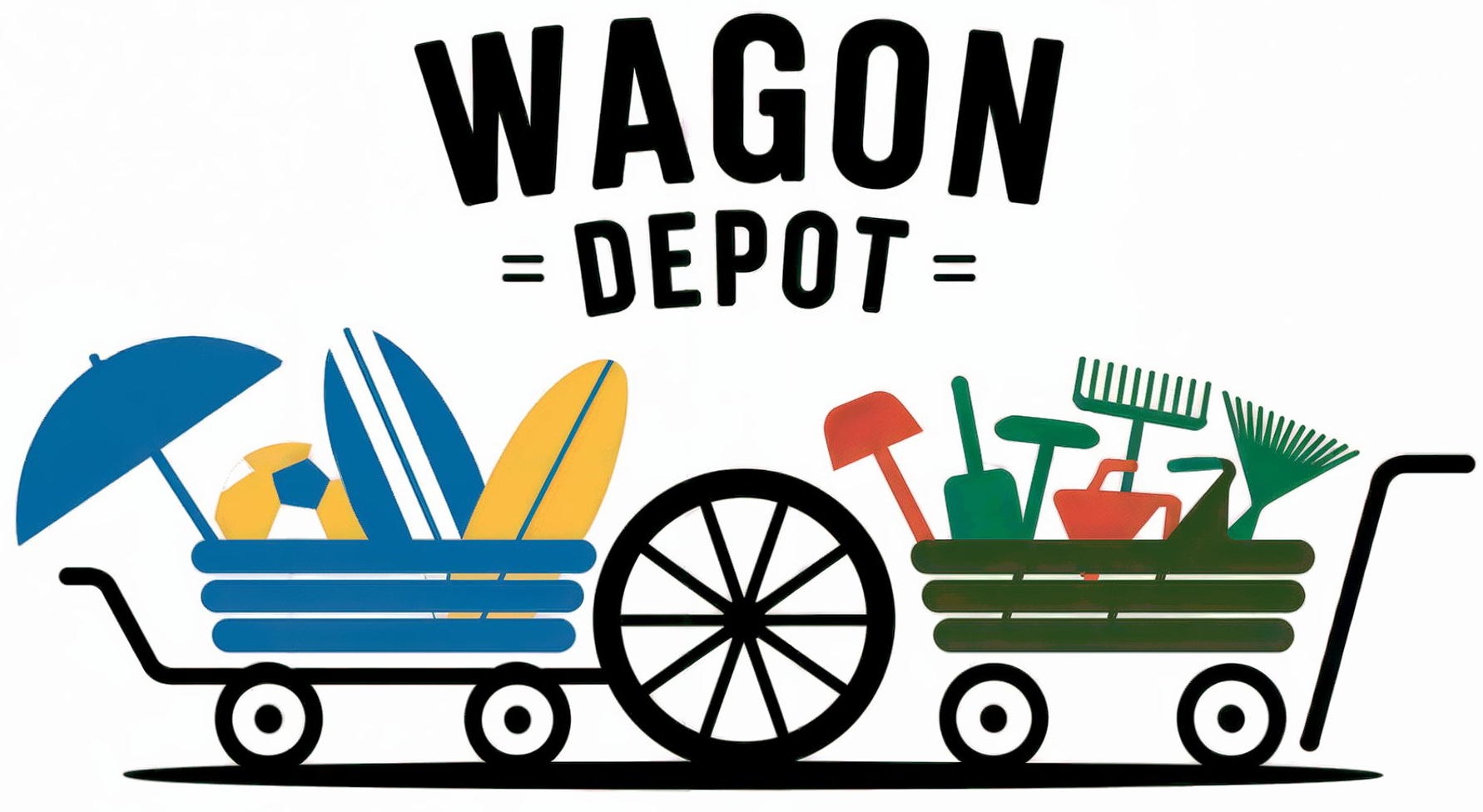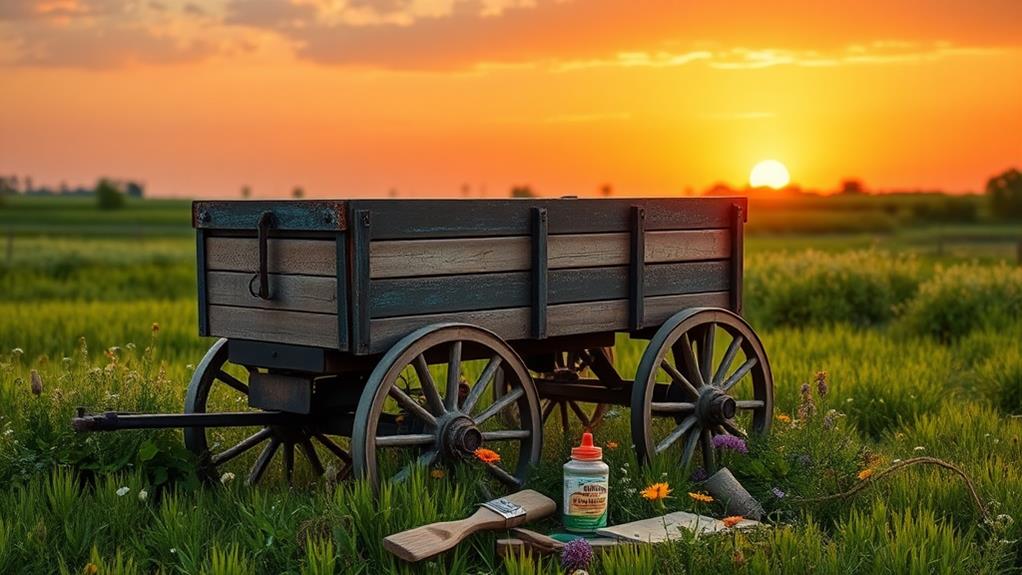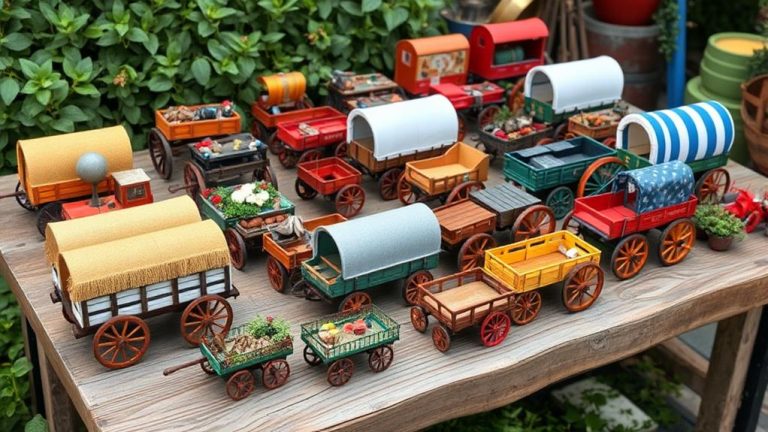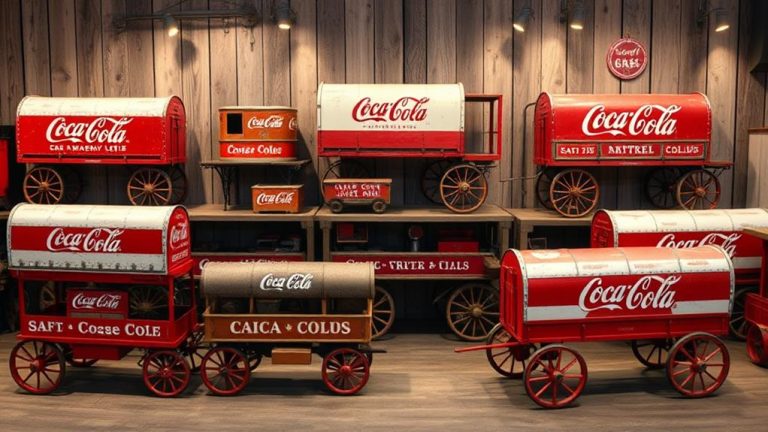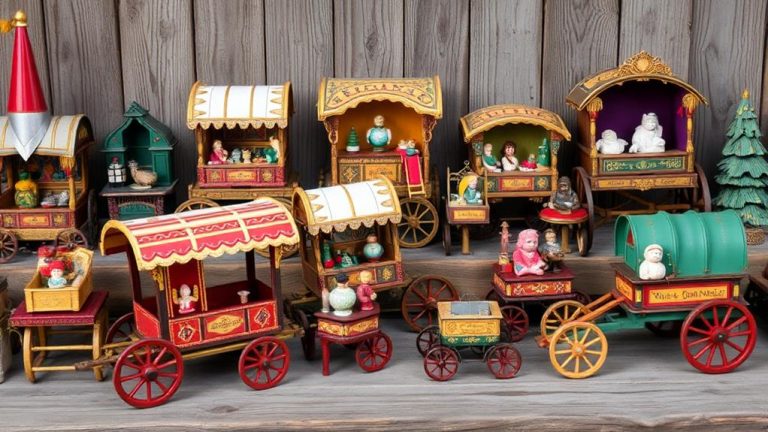To revive a vintage farm wagon, start by evaluating its overall condition. Check for wood rot, metal rust, and wheel stability. Next, restore the wooden components by cleaning carefully and applying a wood preservative to prevent future decay. Use rust removal techniques for metal parts, opting for sandpaper or chemical solutions based on the rust severity. After cleaning, apply a high-quality primer followed by weather-resistant paint to protect against corrosion. Finally, verify the hitching mechanism is functional for usability. By following these techniques, you can bring your vintage wagon back to life as you discover more insights along the way.
Assessing Wagon Condition
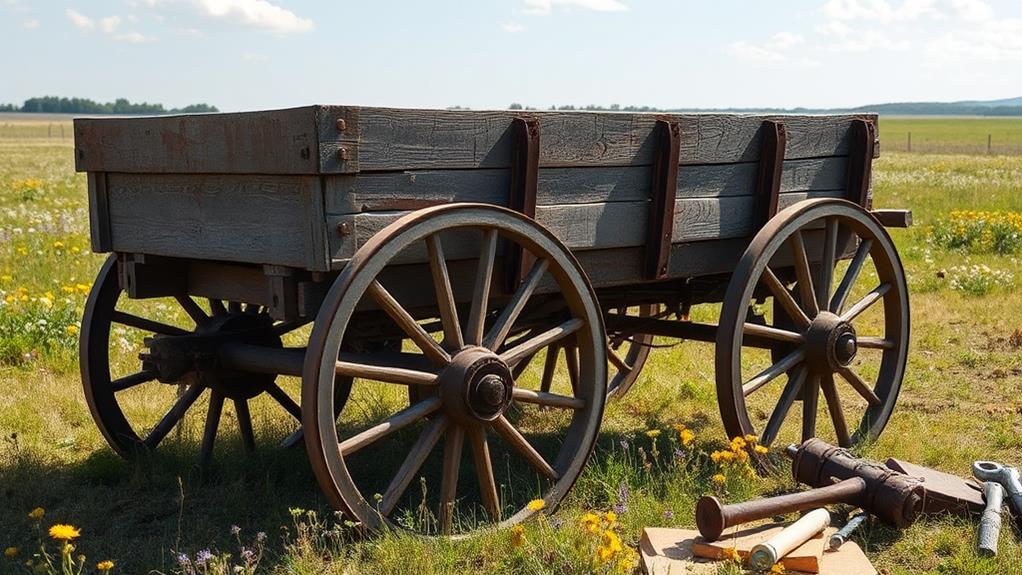
When you approach a vintage farm wagon, the first thing you'll want to do is take a close look at its overall condition. Start by identifying damage, focusing on the wood, metal, and wheels. Look for cracks, rot, or rust that could compromise the wagon's integrity. It's essential to check the joints where the wooden components meet; any separation here could signal deeper issues.
Next, evaluate stability by examining the wagon's frame. Determine if the wheels are securely attached and analyze whether they turn freely. A stable wagon should sit evenly on the ground, so check for any unevenness that might indicate structural problems. Confirm the axles aren't bent and that the wheel spokes are intact, as these are crucial for safe movement.
Don't forget to inspect the hitching mechanism, which is fundamental for functionality. A well-functioning hitch not just secures the wagon but also affects its overall usability. By methodically evaluating these elements, you'll gain a clear picture of the wagon's condition and potential for revival. This thoughtful approach guarantees you make informed decisions about any restoration efforts ahead.
Restoring Wooden Components
Restoring wooden components of a vintage farm wagon requires a thorough approach, as these elements are often the most vulnerable to decay and damage. To guarantee longevity, it's crucial to focus on wood preservation techniques that maintain the integrity of the materials.
Here are three fundamental steps to follow:
- Assessment: Carefully inspect the wood for signs of rot or insect damage. Identifying the extent of wear will guide your restoration efforts.
- Cleaning and Treatment: Use a gentle cleaning solution to remove dirt and grime. After cleaning, apply a wood preservative to protect against future decay and moisture infiltration.
- Hardware Selection: Choose appropriate hardware that complements the vintage aesthetic while guaranteeing structural integrity. Opt for rust-resistant materials to improve durability.
Reviving Metal Parts
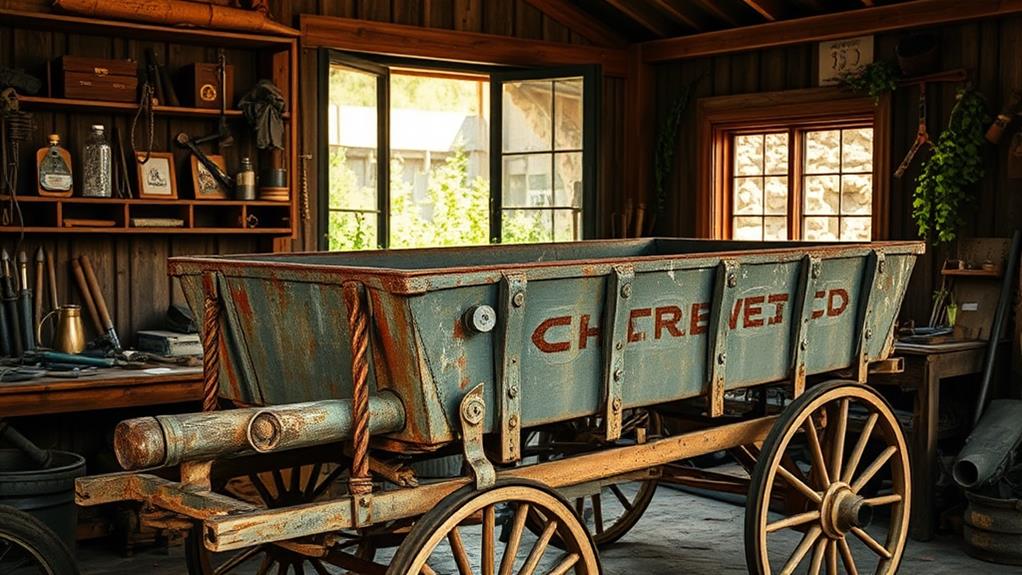
Although metal components of vintage farm wagons often withstand the test of time better than wood, they can still suffer from rust, corrosion, and wear. To revive these parts, start with effective rust removal techniques. You'll want to assess the severity of the rust first; light surface rust can often be tackled with sandpaper or a wire brush, whereas more significant corrosion may require chemical rust removers. Always wear protective gear and work in a well-ventilated area.
Once you've eliminated the rust, it's time for paint restoration. Choose a high-quality primer designed for metal surfaces to guarantee proper adhesion and longevity. Applying a rust-inhibiting primer can be particularly beneficial in preventing future corrosion. After the primer dries, select a suitable paint—preferably one that's durable and weather-resistant. Spray paints designed for metal can provide a smooth finish and uniform coverage.
Frequently Asked Questions
What Tools Are Essential for Vintage Farm Wagon Restoration?
When tackling vintage farm wagon restoration, you’ll need a few vital tools. A quality set of woodworking tools is key for repairing the frame and wheels. Sanding equipment helps with paint restoration, allowing you to strip old layers and prepare surfaces for a fresh coat. Don’t forget clamps for stability during repairs, and a selection of brushes and rollers for an even finish. With these tools, you’re ready to bring that wagon back to life! To complete the restoration, consider the best covered wagon canvas options to achieve an authentic and durable finish. Choosing a high-quality, weather-resistant canvas will help protect the wagon from the elements while maintaining its vintage appeal. Once the structure is restored, securing the canvas properly ensures both historical accuracy and long-lasting functionality.
How Do I Find Replacement Parts for My Vintage Wagon?
Finding replacement parts for your vintage wagon can feel like hunting for buried treasure. Start by scouring vintage wagon marketplaces online, where enthusiasts often sell hard-to-find components. Websites like eBay and Etsy can be gold mines. Don't forget to check local antique shops and swap meets; you might uncover a hidden gem. Networking with fellow restorers can likewise lead you to reliable replacement part sources, ensuring your wagon's revival is a success.
Can I Use Modern Materials in My Restoration?
Absolutely, you can use modern materials in your restoration. Although traditional methods honor authenticity, incorporating modern materials can augment durability and functionality. For instance, using synthetic fabrics or updated adhesives can improve performance without sacrificing the wagon's charm. Just make sure to blend restoration techniques carefully, so you maintain the vintage aesthetic as you benefit from modern advancements. This approach gives you the freedom to create a functional piece that still respects its historical roots.
What Safety Precautions Should I Take During Restoration?
Restoration's like dancing on a tightrope; one misstep can lead to disaster. As you begin this expedition, you've gotta prioritize safety. Start by evaluating restoration risks—sharp tools, heavy materials, and chemical fumes are all lurking dangers. Always wear safety gear, like goggles, gloves, and a mask, to shield yourself. Don't forget to work in a well-ventilated space and keep a first aid kit handy. Safety's your partner, ensuring your creative freedom flourishes.
Are There Any Vintage Wagon Clubs or Communities to Join?
If you're looking to connect with others passionate about vintage wagons, there are several vintage wagon clubs and restoration communities you can join. These groups often share resources, tips, and experiences, making your restoration expedition more enjoyable. Engaging with fellow enthusiasts not just improves your skills but additionally provides a sense of camaraderie. You'll find inspiration and support, allowing you to fully embrace the freedom of restoring these beautiful pieces of history.
